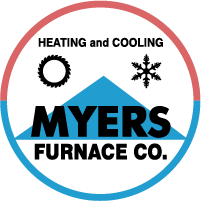Everyone’s always looking to save money on their utility bills, but it turns out there’s a way to lower energy use, even when you’re not even home.
It starts with your thermostat. By using automatic schedules, you can tailor the temperature to your needs. You can create a number of automated temperature settings for when you’re at home, away or even when you’re sleeping.
If you’re willing to make these adjustments, you can enjoy comfy temperatures while cutting down your energy bills. Take a look at a few ways your thermostat can be a source of energy savings:
While at Home
When you’re home, you want comfortable temperatures. It’s only natural to want your thermostat lower in the summer if you’re indoors to appreciate the cool air.
But the most energy-efficient temperatures for the summer is in fact anywhere between 78 and 80 degrees Fahrenheit. With this adjustment, you’ll keep cool while still lowering your monthly energy bill.
While Out of the House
When it comes to setting the temperature for when you are out of the house in summer, it’s extremely common to move the thermostat higher than you would if you were in the house.
If your home is in a shady spot in a cooler climate, you can set the temperature as high as 88 degrees while no one is home before you adjust it back to the sweet spot of 78-80 degrees once you’re home again. This way, your air conditioning unit won’t be working overtime to provide cooling for a bunch of empty rooms.
While Sleeping
To enjoy a good night’s sleep during the summer, you want a nice cool temperature. A good rule of thumb is between 68-72 degrees Fahrenheit. This will keep you from getting too hot or too cold when you are trying to get some rest.
Additional Ways to Reduce Energy Use:
- Smart thermostat installation: Using a smart thermostat in the summer helps save money on energy costs as it forms temperature schedules according to your lifestyle and idea of what comfortable is. They can lower the temperature while you are home or sleeping, while allowing it to get a little warmer when no one is around. With models like the Lennox iComfort, you are able to adjust settings and schedules through your smartphone, tablet or laptop. Scheduling smart thermostat installation in your Belton home can be the simplest strategy for maintaining comfortable, yet energy-efficient temperatures no matter where you are.
- Upgrade your HVAC system: Upgrading your HVAC system is another great option for long-term energy savings. With greater energy efficiency, you can also count on lower utility bills since more efficient equipment requires less energy to reach your preferred temperatures. Air conditioning installation in Belton is a great way to beat the heat in the summer.
- Schedule annual AC maintenance: Whether or not you keep up with regular air conditioning maintenance in Belton can have a big impact on your monthly energy use. With regular cleaning of the coils, checking for damage and keeping vents clear of dust and debris, this can help your HVAC system perform better during day-to-day use.. Increasing efficiency also limits strain on important or delicate components and lowers operational costs, resulting in lower energy usage and subsequently, smaller bills.
- Clean or replace the air filter on a regular basis: Regularly changing the air filters in your HVAC system saves money by helping air flow efficiently through your air conditioner. When filters are old and less effective, an AC unit has to work harder, and this greater strain could shorten the system’s life span and result in breakdowns.
- Check your attic insulation: Insulation is one of the key components in any energy-efficient home, keeping the hot air outside and the cool air inside through summer. The North American Insulation Manufacturers Association (NAIMA) suggests that homeowners living in southern climates should install at least 13-14 inches of insulation, while states further north need 16-18 inches.
- Check your ventilation: Damage to the ventilation is capable of increasing your energy bills much more than 20 percent, plus it can potentially allow harmful emissions from your water heater, clothes dryer and other appliances throughout your home. Finding any leaks fast and sealing them can fix both of those problems.
- Seal all other leaky spots in your home: Sealing up other leaks in your home with caulk, foam sealant or weather-stripping keeps temperatures a little cooler on hot summer days. It’s also important to check for any gaps around windows, doors and even outdoor fixtures. Making time to seal leaks now can help you save a lot over time.
